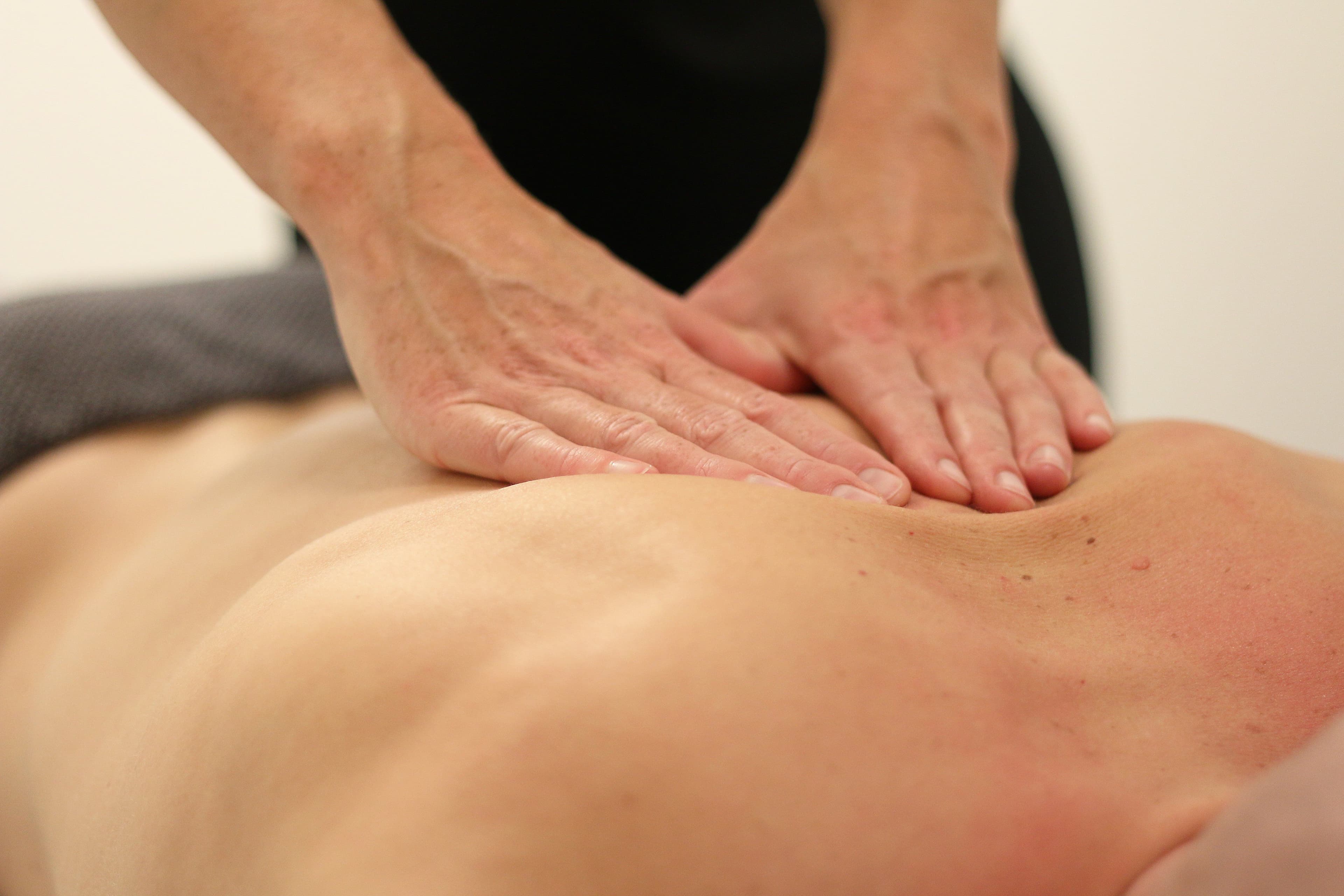Maximizing Your FSA for Massages in 2025: What You Need to Know

An FSA account can be one of the largest perks an employer can offer an employee. It’s a mutually beneficial arrangement, as healthy employees can do their best work. Massage therapy can play an important role in promoting and supporting better health, which begs the question: can you use your HSA for massages?
Here’s what you need to know about experiencing the benefits of massage through your FSA.
What Is an FSA?
FSA stands for flexible spending account. An FSA account is a special account established by an employer where employees can deposit pre-tax money for healthcare-related needs.
Some employers choose to match employee contributions to FSA accounts up to a maximum threshold, but contribution matching isn’t required. Funds from your FSA account can be used for eligible healthcare expenses.
Your employer doesn’t control your FSA account. While they’re able to make contributions to your account, they aren’t the custodian. Any communications about your FSA account should go to the custodian, including requests for approval for certain types of spending.
How Does an FSA Work?
Your FSA custodian will issue you a debit card linked directly to your account. You can use your FSA debit card for eligible purchases when you shop with retailers that accept FSA payments. If you’re shopping with a retailer that doesn’t offer FSA payments, you can make eligible purchases with your own money and reimburse yourself from your FSA.
FSA accounts are funded by pre-tax money, which means that the IRS has the final say over what types of expenses are eligible. If you make a purchase outside of the scope of normal eligibility and you don’t have a doctor’s permission to do so, you’ll need to pay a tax penalty on the amount you spent.
Is Massage a Medical Treatment?
Massage is often regarded as a luxurious pampering treatment that helps people relax — and while massage can be used leisurely, its primary purpose is to promote your health. Massage is a type of therapy that has been clinically proven to support and improve mental and physical health.
Doctors often recommend massage for patients recovering from an injury or a surgical procedure, but massage can also be used to manage conditions that cause chronic pain or swelling.
Chronic Pain
Massage is a non-invasive way to manage the symptoms of chronic pain without utilizing medication. Massage stimulates the musculoskeletal system, the lymphatic system, and the immune system.
The process of massage encourages the muscle to repair itself while promoting increased circulation throughout the body. Improved circulation allows freshly oxygenated blood and nutrients to flush the muscles, feeding them what they need to heal naturally. Increased lymphatic drainage can help reduce swelling and discomfort.
Muscle Recovery
Massage can improve muscle recovery time after surgery, athletic injury, or overuse injury by supporting the body’s natural healing processes. Massage can reduce swelling and tension that contribute to muscle pain, making it easier for people to go about their daily lives while their bodies work in the background to heal.
Mental Health
Massage encourages the body to release endorphins that manage physical and emotional tension. Conditions like depression and anxiety can contribute to an increase in muscle tension throughout the body, which may lead to fatigue and insomnia. Releasing tension and increasing endorphin production can lead to an improved mood and even better quality sleep.
What Does an FSA Cover?
The FSA eligibility list is comprehensive. Many health and wellness purchases that are a regular part of your everyday life will be covered by your FSA funds, including over-the-counter purchases and medicine cabinet mainstays.
Medical Appointment and Prescription Costs
FSA funds can be used for copays on medical appointments and prescriptions. This includes appointments with dentists, optometrists, podiatrists, and other specialists. You can use FSA funds to pay for medical appointments even if your visit to a healthcare professional isn’t covered by your insurance.
Over-the-Counter Medicines
Over-the-counter medicines like pain relievers, cold and flu meds, and allergy medicines are covered by FSA funds. You can also use FSA funds for things like cough drops, vapor rub, and chewable antacid tablets. Medicated ointments like muscle relief creams and anti-itch cortisone creams are considered medicine for FSA purposes.
Medical Devices and Accessories
Things like diabetes test strips, glucose meters, canes, reading glasses, and contact lens care products are eligible for FSA payment. Any prescription medical device or accessory related to the treatment of a medical condition is covered, including batteries for portable glucose meters.
First Aid and Wound Care
Anything you would use to treat a simple wound at home is covered by FSA funds. Bandages, peroxide, isopropyl alcohol, and hand sanitizer are all FSA-eligible expenses. Sunscreen and sunburn relief products are considered to be first aid products. Many sunscreens are FSA-eligible items as long as they aren’t considered cosmetics that contain sunscreen, like tinted products.
Can You Use FSA Funds for Massage?
Massage isn’t considered a traditional medical treatment under FSA rules. There may be circumstances where a doctor feels that massage is a necessary part of a treatment or a recovery plan. If a doctor prescribes massage as a treatment, the rules can be bent with a doctor’s note called a Letter of Medical Necessity.
What Is a Letter of Medical Necessity?
A Letter of Medical Necessity is an official doctor’s note stating your diagnosis and their recommended treatment for your condition. In this note, your doctor will detail the health condition you’re experiencing and explain why massage should be a necessary part of your management or recovery plan.
Your Letter of Medical Necessity serves as official permission to use your FSA funds for massage by declaring massage medically necessary. Your Letter of Medical Necessity will be valid for massage therapy for up to a year unless your doctor recommends a specific period of time or number of massages in the letter. Keep a copy of your Letter of Medical Necessity with your receipts or invoices for your massage payments to prove that your FSA funds were spent appropriately.
Getting a Letter of Medical Necessity From Your Doctor
You can speak to your doctor about the benefits of massage at your next appointment. If your doctor agrees that massage would be medically valuable for you, they can write you a Letter of Medical Necessity that will allow you to use FSA for massages.
If your need for a massage is urgent, consider how long you may have to wait for a doctor’s appointment. Depending on your doctor’s schedule, it may be as long as several months before you’re able to obtain the letter you need.
Obtaining a Letter of Medical Necessity Through Truemed
Truemed’s simple survey-style evaluation process allows you to get a Letter of Medical Necessity quickly and easily. The small cost of the evaluation is completely covered by FSA funds as a medical expense, and you can pay using your FSA-linked debit card. After your evaluation, you can be granted a Letter of Medical Necessity for massage if a healthcare professional agrees that massage would be beneficial for you.
How To Get Better Massage Therapy Rates Through Your FSA
Employers that offer FSA accounts to their employees often also create employee wellness programs. They may partner with gyms, health food stores, smoothie bars, spas, and even massage therapists to offer discounted rates to their employees. Discounts usually range from 10% to 20% when an employer partners with another business.
Ask your employer if they partner with a massage therapist or a wellness center that offers massage services. You should be able to stack your discount with your FSA funds to save even more money on your massage.
Some employers offer massage services to their employees by having a massage therapist periodically come to the office for brief wellness massages. These massages may not be sufficient enough to address underlying medical issues, but they’re often free.
Managing Your Health Is Easy Through Truemed

We’ve always believed that the choices we make are medicine. The foods we eat, the exercise we incorporate into our daily routines, and even the massages we get to manage discomfort are essential parts of overall human health.
Truemed partners with brands and merchants in the health space to make it easier for people to purchase their healthcare needs with FSA funds. We even partner with gyms like Workout Anytime that offer hydromassage amenities to guests who need to soothe their sore muscles. Empower yourself through Truemed.
Sources:
IRS: 2024 Flexible Spending Arrangement contribution limit rises by $150 | Internal Revenue Service
Benefits of massage therapy | Mayo Clinic Health System
Lymphatic Drainage Massage: What it Is, Benefits & How To Do It | Cleveland Clinic
Mayo Clinic explores: The role of massage therapy for mental health | Mayo Clinic Press
Editorial Standards
At True Medicine, Inc., we believe better health starts with trusted information. Our mission is to empower readers with accurate and accessible content grounded in peer-reviewed research, expert insight, and clinical guidance to make smarter health decisions. Every article is written or reviewed by qualified professionals and updated regularly to reflect the latest evidence. For more details on our rigorous editorial process, see here.